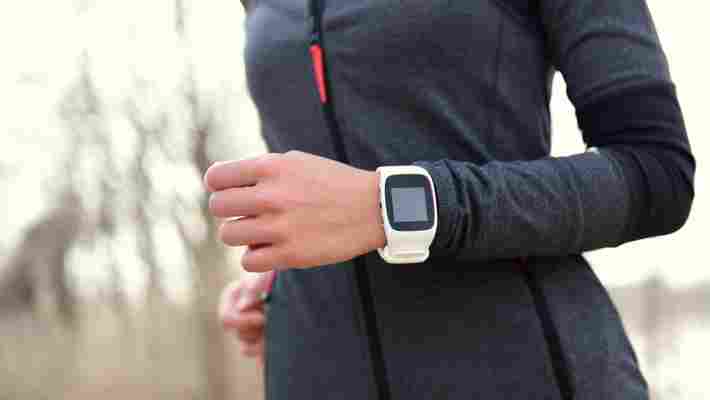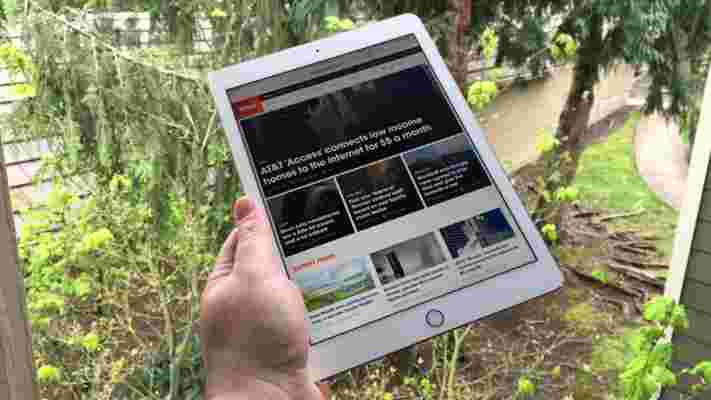Sony’s Future Lab demos its next-gen wearable prototypes at SXSW
Sony has launched a new research and development program called Future Lab , and is at SXSW demoing the first prototypes from the program, including a new wearable device with the working name “N.”

The device responds to voice prompts and can be used to receive information, like news alerts or weather forecasts, and to take photos. It also functions as a set of earphones which can be worn with or without in-ear buds.
With the ear buds in, you’ll can listen to your audio of choice, while still hearing the surrounding ambient sound. If used without the buds, the audio plays into the space you’re current in – not a feature we imagine being popular on public transport.
For a live demo of the product, catch TNW Editor at Large Martin Bryant with the device at last night’s press launch.
Future Lab’s goal is to release concept products at a relatively early stage of development, and invite feedback from program participants. This feedback will be used to refine the products and evolve the prototypes.
Future Lab also has a developers program and design startup 16lab demoed an integration of N with its Bluetooth gesture ring Ozon. This allows the wearer to take pictures or perform any of the other commands using gesture rather than voice.
Other Future Lab Sony prototypes being demoed at SXSW include a multi-axis moving projector that allows the user to move the projected image across any wall or ceiling, and a projector that turns a flat surface into an interactive tabletop. Content can be moved around the table with both touch and by hovering above objects.
For a better look at what you can find at Sony’s Future Lab at SXSW, check out the video below.
Skyhook Wireless allows wearables to break free from smartphones
Skyhook Wireless – the company that handles location requests for a number of tech giants including Apple, Samsung and Dell – just launched a new ultra-light software development kit (SDK) that will make location services for wearables a lot more convenient.

Until now, wearables could only support location requests through intermediary devices – smartphones or tablets, for instance – as a result of their limited technical capacities.
Skyhook’s new Precision Location for Wearables SDK will offer location services directly to wearables without the need for a surrogate device . The reduced size of the development kit makes it possible to build the solution straight into the firmware of any wearable device.
Once implemented, the software transmits location data back to Skyhook’s servers, where users can track it through an app or a website.
“We have spent years refining our location services, and with this unique solution, we can now unleash the power of location to an entirely new class of devices in a massively expanding market,” commented David Bairstow, Skyhook’s VP of Product.
Among the first companies to take advantage of Skyhook’s Precision Location SDK is wearable camera manufacturer Narrative . With Skyhook’s solution built-in, Narrative’s wearable cameras will let users quickly and easily tag videos and photos with a precise location.
Given the increased interest in wearables, the technology can be particularly useful to a wide range of devices whose functionality can be improved with readily available location services. Fitness trackers, for one, immediately come to mind.
The advent of Skyhook’s location technology does raise concerns over privacy with its enhanced tracking capabilities, but Bairstow assures that users will have sufficient control over their location data and promises to include an option to switch off tracking completely.
➤ Skyhook Wireless brings location services to wearables in a petite package [TechCrunch]
Review: Apple’s iPad Pro 9.7-inch is the best tablet around, but won’t replace your laptop (yet)
When Apple introduced a smaller iPad Pro, we knew it would either be the best iPad Apple could make, or some oddity that had no home in the tablet ecosystem. It’s essentially a mixture of the Air 2 and 12.9-inch Pro, which could either confuse or delight — or maybe both.

The same weight and dimensions as the Air 2, the Pro 9.7-inch (which I’ll just call the Pro for this article) is familiar in the hand. It’s basically an upgraded iPad Air 2 with quad speakers and a unique screen assembly.
The Pro also has Apple’s latest A9x SoC and 2GB RAM powering it along. The Air 2 uses an A8x chipset.
The screen is different for two reasons: Apple Pencil and True Tone display. True Tone uses light sensors to get a feel of your surroundings to adjust the screen color temperature. Apple thinks it will make looking at the screen more comfortable for long periods (spoiler: it does).
Apple Pencil requires some extra sensors, so the display is a different assembly from the Air 2. It’s got the same 2048 x 1536 resolution, but a wider color gamut with up to 25 percent more saturation than other iPad models — and it’s gorgeous.
Quad speakers seem gimmicky (at least to me) until you stream media. Turn on a Netflix movie or play a game, and the sound difference between the Pro and Air 2 becomes glaring. It’s also loud — really loud if you want it to be — and crisp. For a device of its size, the speaker arrangement packs a punch.
My response to that is really lame, but here it is: it depends (but not really).
If you’re talking about someone like me, the answer is “definitely not.” I do a ton of really heavy lifting and routinely use programs iOS can’t be bothered with (like Xcode). I’m a power user, and only slink down to the 12-inch MacBook when traveling.
For moderate use, I can argue that it could. Apple also has a very nice smart keyboard cover for the Pros (each have their own appropriately sized cover). Typing on it isn’t a chore; it has nice key travel, even if the arrangement is a bit cramped.
Some like to knock Apple’s choice to leave shortcut keys off the smart keyboard cover, but that’s (mostly) negated by having a touch screen. I don’t need playback, volume or screen brightness hardware controls on an iPad keyboard.
That said, if you’re a day traveler or otherwise not-tied-to-a-desk type and do lighter work like check emails and whip up a few documents daily, I can say the Pro may serve you well. It’s great for responding to messages, using Safari and simple multitasking via split-screen mode. So long as apps you use have iOS counterparts, it’s a decent day-travel buddy.
Apple is actively positioning the Pro as a computer replacement, and its reasoning is solid. It’s modular because it has accessories, and serves as a fine line between the power of OS X and the desire of some to have a touchscreen Mac. I respect Apple’s position, here.
But to me, it’s a tablet that happens to do some traditionally computer-y things. The aforementioned examples push the Pro’s limitations as a laptop replacement, at least in 2016, and the 12.6-inch Pro is definitely a better option for a computer replacement than the 9.7-inch model.
Also, iOS is just not a desktop-class platform, at least not yet. Enough said.
That really depends on one thing: do you want the Apple Pencil?
If your experience with an iPad leans on the Apple Pencil, you’ll definitely want the Pro. I’m personally not fond of the Pencil as an input device; I only find it handy when editing photos, and that’s not compelling enough.
It’s comparably specced to the Air 2, so performance is essentially the same. The Pro also has the smart keyboard to lean on, but you can get keyboard covers for the Air 2 — they just use Bluetooth to connect rather than Apple’s new three-dot Smart Connector.
The Pro also has Apple’s best camera, a 12 megapixel shooter. Combined with the better screen, videographers might fall in love — except that it’s so large.
And if you’re a fan of 3D Touch ( like me! ), there’s no point of buying any iPad right now — and the Pro seems to err towards the Apple Pencil rather than 3D Touch. It’s a polarizing choice.
Apple Pencil on the smaller Pro is also a bit laggy for my liking. It didn’t lose any input during normal use, but writing faster than a stylus can recognize only punctuates why we prefer keyboards and fingers for input, by and large. It’s fantastic for mark-up or sketching, but is not a note-taking tool in my eyes.
The Pro is also a bit more expensive than the Air 2 (it starts at $599, while pricing for the Air 2 begins at $399), and the peripherals also cost quite a bit (Apple Pencil is $99, and the Smart Keyboard Cover is $149).
Still, of all the iPads on offer, I’d say the Pro at 9.7-inches is the best pound-for-pound model available. True Tone is subtly wonderful, and a solid eye-saving combination when paired with Night Shift . Battery life is (as expected) great, and it’s powerful enough to do just about anything you’d reasonably want an iPad to do.
Taking photos with it is odd, but knowing those moments you capture when your kids are being their cutest while you’re reading Medium will turn out great is beneficial.
I really like the iPad Pro; it’s just that I see it as the best tablet around — not a replacement for the computer, at least not yet .
